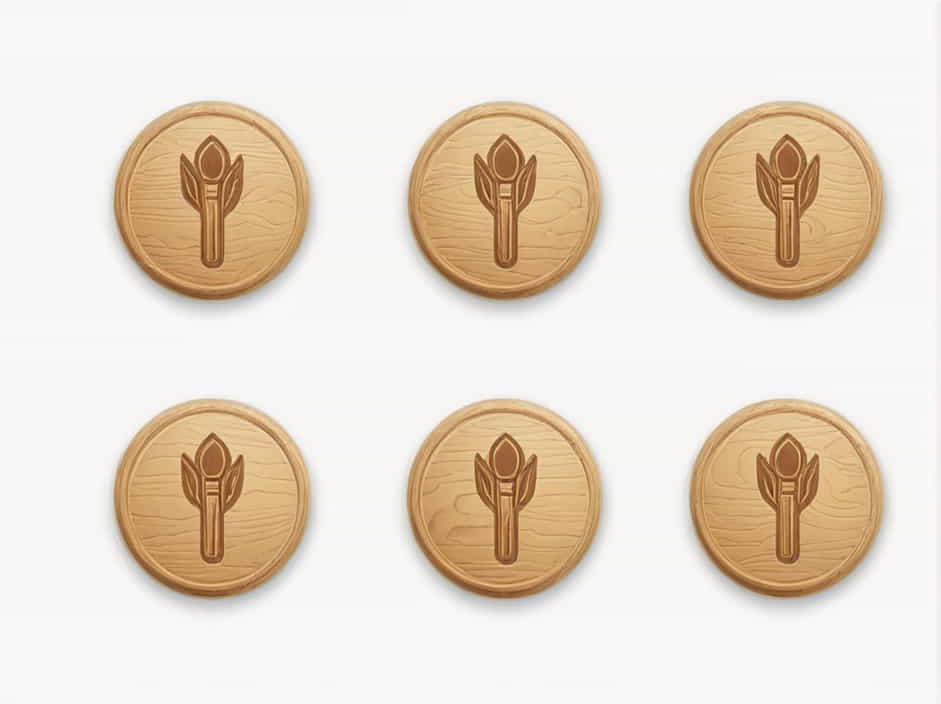Wooden pegs have been used in agriculture for centuries as a simple yet effective tool. They serve various functions, from marking planting areas to supporting crops. Despite modern advancements, wooden pegs remain relevant due to their affordability, sustainability, and ease of use.
This topic explores the different uses of wooden pegs in agriculture, highlighting their benefits and practical applications.
1. Marking Planting Areas
One of the primary uses of wooden pegs in agriculture is marking planting areas. Farmers use pegs to outline plots, ensuring crops are planted in straight rows. This technique improves space management and facilitates irrigation and weeding.
Benefits of Marking with Wooden Pegs
- Precision in Planting: Ensures even spacing between crops.
- Better Organization: Helps in crop rotation planning.
- Ease of Irrigation: Straight rows allow for efficient water distribution.
2. Supporting Young Plants and Seedlings
Young plants and seedlings often require support to grow upright. Wooden pegs serve as natural stakes, preventing plants from bending or breaking due to wind or heavy rain.
Common Crops That Benefit from Wooden Peg Support
- Tomatoes – Prevents stems from falling and increases air circulation.
- Beans and Peas – Supports climbing vines.
- Pepper Plants – Reduces the risk of stem breakage.
3. Defining Garden Paths and Boundaries
Wooden pegs help define pathways in farms and gardens, preventing people from accidentally stepping on crops. They also mark the boundaries of different planting sections, keeping the farm well-organized.
Advantages of Using Wooden Pegs for Boundaries
- Prevents Damage to Crops: Reduces accidental trampling.
- Improves Farm Layout: Helps in designing efficient planting areas.
- Eco-Friendly Alternative: A sustainable option compared to plastic markers.
4. Training Vining Crops
Some crops, such as cucumbers and grapes, require vertical support to maximize yield. Wooden pegs, combined with strings or nets, guide plant growth in a controlled manner.
Why Use Wooden Pegs for Training Crops?
- Improves Sun Exposure: Helps plants receive uniform sunlight.
- Reduces Disease Risk: Keeps crops off the ground, preventing fungal infections.
- Enhances Yield Quality: Encourages healthy growth and higher productivity.
5. Securing Row Covers and Mulching Sheets
Wooden pegs are often used to anchor row covers and mulching sheets, protecting crops from harsh weather and pests. They ensure that protective coverings remain in place, even in windy conditions.
Benefits of Securing Covers with Wooden Pegs
- Prevents Soil Erosion: Keeps mulch in place during heavy rain.
- Protects Crops from Pests: Reduces insect and bird damage.
- Maintains Soil Moisture: Helps retain water for better plant growth.
6. Measuring Plant Growth
Farmers use wooden pegs to track plant growth over time. By marking initial plant height on the peg, they can monitor progress and adjust farming practices accordingly.
How This Helps Farmers
- Tracks Growth Patterns: Identifies slow or rapid growth.
- Improves Crop Management: Helps in adjusting fertilizer and water usage.
- Aids in Research: Useful for testing new farming techniques.
7. Natural Trellises for Climbing Plants
Wooden pegs can be arranged in a trellis system to support climbing plants like passion fruit and bitter gourd. They offer a biodegradable and cost-effective alternative to metal or plastic structures.
Why Choose Wooden Peg Trellises?
- Environmentally Friendly: Reduces plastic waste in agriculture.
- Cost-Effective: Readily available and affordable.
- Enhances Aesthetic Appeal: Blends naturally into the garden.
8. Identifying Different Crop Varieties
In mixed cropping or experimental farming, wooden pegs serve as plant labels. Farmers write crop names or planting dates on pegs to track different varieties.
Advantages of Using Wooden Pegs for Labeling
- Prevents Confusion: Keeps farm records organized.
- Useful for Research Farms: Helps in analyzing crop performance.
- Durable and Biodegradable: Unlike plastic labels, wooden pegs decompose naturally.
9. Pest Control and Trap Placement
Farmers use wooden pegs to hold insect traps, such as sticky pads for aphids or pheromone traps for fruit flies. They ensure that traps are positioned correctly and remain stable.
How Wooden Pegs Help in Pest Management
- Supports Physical Barriers: Holds netting and barriers in place.
- Improves Trap Effectiveness: Keeps traps at the right height for maximum efficiency.
- Reduces Chemical Use: Encourages natural pest control methods.
10. Supporting Irrigation Systems
Wooden pegs help position drip irrigation lines or sprinklers, ensuring efficient water distribution. They keep hoses in place and prevent them from tangling.
Why This is Important?
- Ensures Even Watering: Helps direct water to plant roots.
- Prevents Water Wastage: Keeps irrigation lines in place.
- Improves Farm Efficiency: Reduces manual labor in adjusting irrigation.
Wooden pegs are simple yet highly versatile tools in agriculture. From marking planting areas to supporting irrigation systems, they play a crucial role in farm management. Their eco-friendly nature and affordability make them an excellent choice for both small and large-scale farmers.
By incorporating wooden pegs into various farming practices, agricultural productivity and sustainability can be improved, making them an invaluable asset in modern and traditional farming alike.
